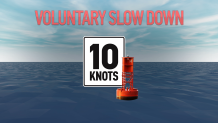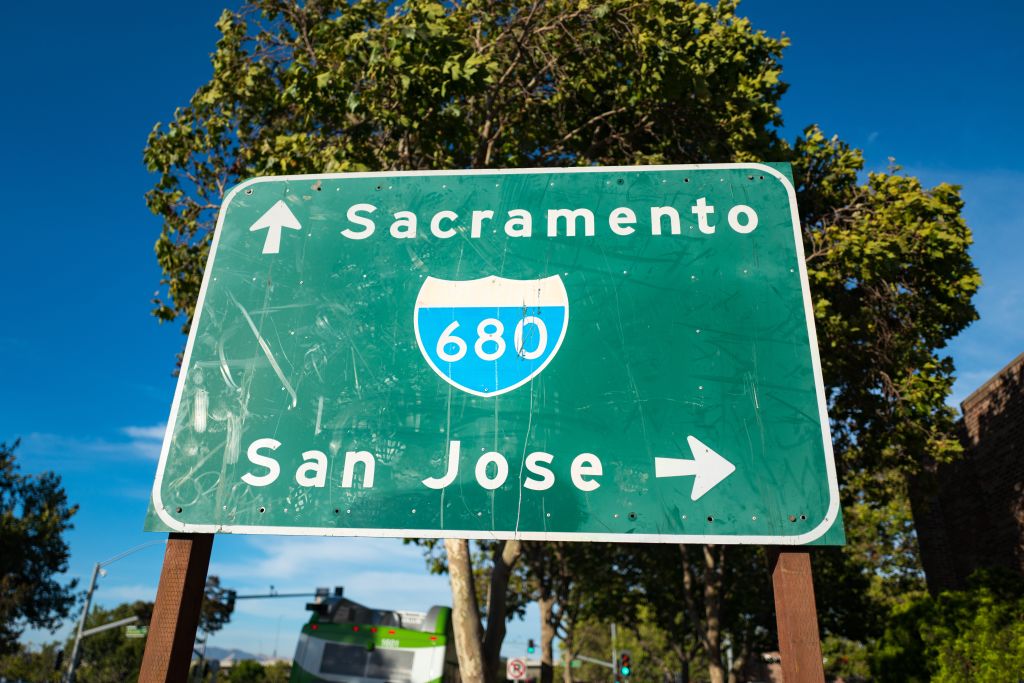Ships traveling off the California coast could soon be forced to adhere to mandatory speed limits after voluntary restrictions have repeatedly proved ineffective at significantly reducing deadly collisions with whales. An increasing number of whale deaths in and around the San Francisco Bay has pushed a national environmental group to take legal action against the Biden administration in hopes of enacting tougher protections.
On Monday, the Center for Biological Diversity filed a legal petition to urge the federal government to enact mandatory speed limits for ships traveling along parts of northern and southern California.
“Years of voluntary speed limit recommendations have failed to slow enough ships to reduce mortality by the level required by law,” noted the legal petition. “Scientists estimate that 80 whales die from ship strikes each year on the U.S. West Coast, although records of dead whales injured by ship strikes are less frequent because the carcasses may sink to the bottom of the ocean or wash ashore on remote beaches.”

Get a weekly recap of the latest San Francisco Bay Area housing news. Sign up for NBC Bay Area’s Housing Deconstructed newsletter.
Most Ships Ignore Voluntary Speed Limit
Ships travel in and out of San Francisco Bay more than 12,000 times a year, according to the U.S. Coast Guard. In 2015, NOAA enacted a voluntary 10-knot speed limit in and around the San Francisco Bay in an effort to reduce the prevalence of deadly collisions with whales. However, a 2020 analysis by the NBC Bay Area Investigative Unit exposed that ships frequently ignored those voluntary restrictions. In fact, 54% of ships exceeded the suggested speed limit from 2016 to 2018, according to U.S. Coast Guard monitoring data obtained and analyzed by the Investigative Unit.
Upon reviewing government records, NBC Bay Area also determined that one out of every three whales killed by a ship strike is an endangered species. With particularly vulnerable populations, such as the blue whale, government estimates suggest the deaths of just two whales is enough to push the entire population towards extinction.
Local
“A lot of the time, ships don't even know when they're striking a whale,” said Steve Jones, a spokesperson for the Center for Biological Diversity. “It is sort of invisible problem that you're reporting really brought to light."
Legal Petition Aims to Enact Year-Round Speed Limit
Over the past six years, NOAA has put its voluntary speed restrictions in place from May to November. The newly filed legal petition, however, requests the voluntary speed limit be made mandatory, year-round.
“If [shipping companies] don't have to do it, they won't,” Jones said. “Ship strikes are a leading cause of death for whales along our coast and the federal government needs to do to do more to prevent this.”

NOAA Finalizing Plans to Overhaul Voluntary Speed Reduction Program
While NOAA declined to comment on the legal petition, the federal agency said it is in the midst of finalizing potential revisions to its voluntary slowdown program in hopes of reducing the risk to threatened and endangered whales. When the agency created the voluntary speed reduction program in 2015, it set out to reduce the lethal risk to whales by at least 50%. NOAA, however, said an analysis of its speed reduction program completed last year concluded that even if 90% of ships complied with the voluntary speed restrictions, the collision threat to whales would only be reduced by 25%, leaving NOAA only halfway to its desired goal.

As a result, the agency has developed three possible plans to overhaul its current program that it intends to present to the public by June. NOAA has yet to release any details about those pending proposals, but the agency did confirm that any restrictions involving the shipping industry would continue to be voluntary. While the agency remains tight-lipped on its pending plans, it is possible reforms could include expanding the geographic area and duration of the voluntary speed limits.
“We are very fortunate to have endangered blue whales, threatened and endangered humpback whales, and threatened fin whales off our coast in the San Francisco Bay Area,” said Maria Brown, superintendent with NOAA's Greater Farallones National Marine Sanctuary, which was created to protect marine life spanning across more than 1,200 square miles. “It should be a safe place for marine wildlife and a place in which we can help wildlife rebound and reduce risks to their survival.”
Watch Our Entire Series:
- Part 1: Hundreds of Endangered Whales Likely Killed off CA Coast Over Past Decade
- Part 2: ‘Ship Strikes' Killing Whales Despite Govt. Program to Slow Down Vessels
- Part 3: Trump Administration Facing Legal Action Over ‘Ship Strikes' Killing Endangered Whales
- Part 4: Environmentalists Wage Legal Battle to Curb Whale Deaths Off CA Coast



